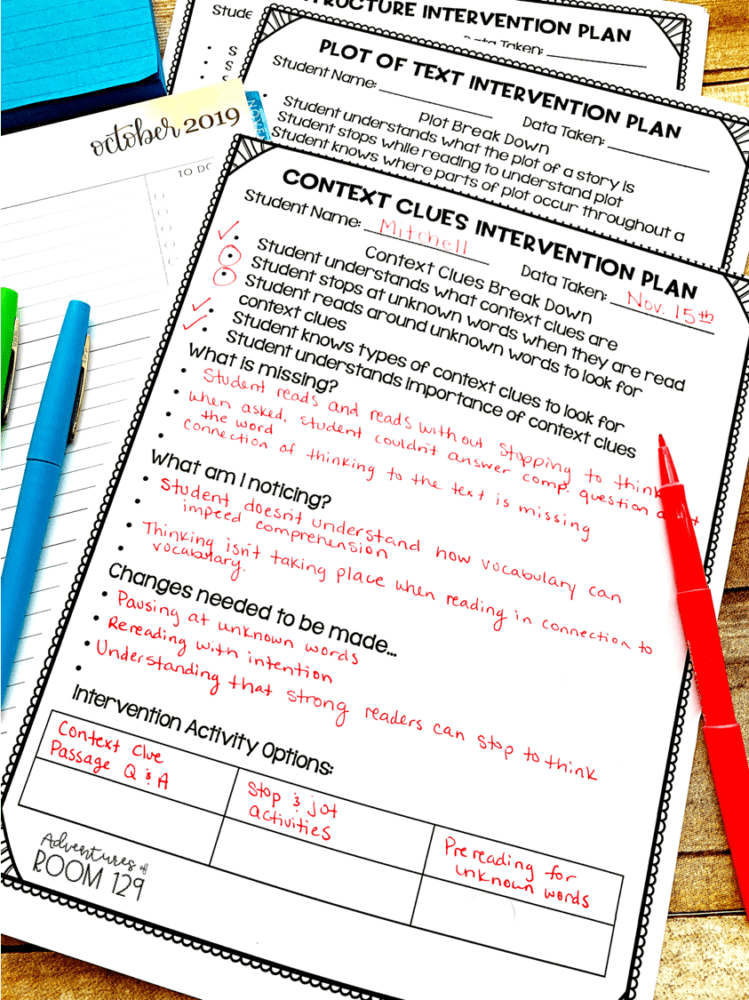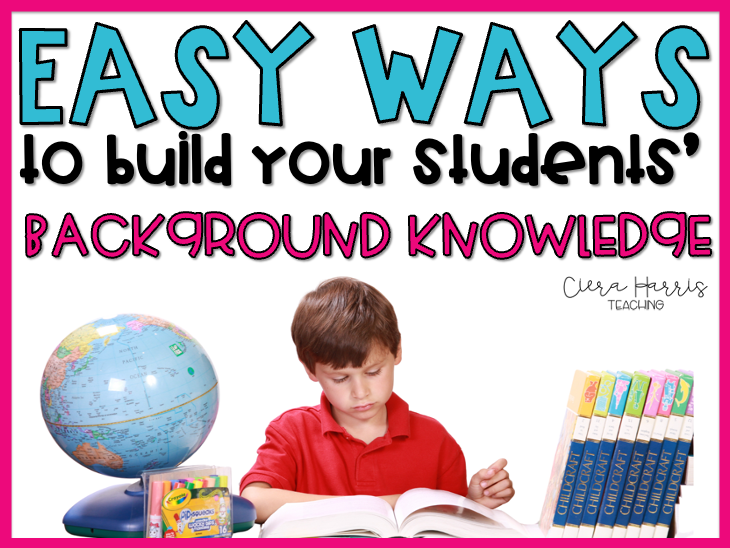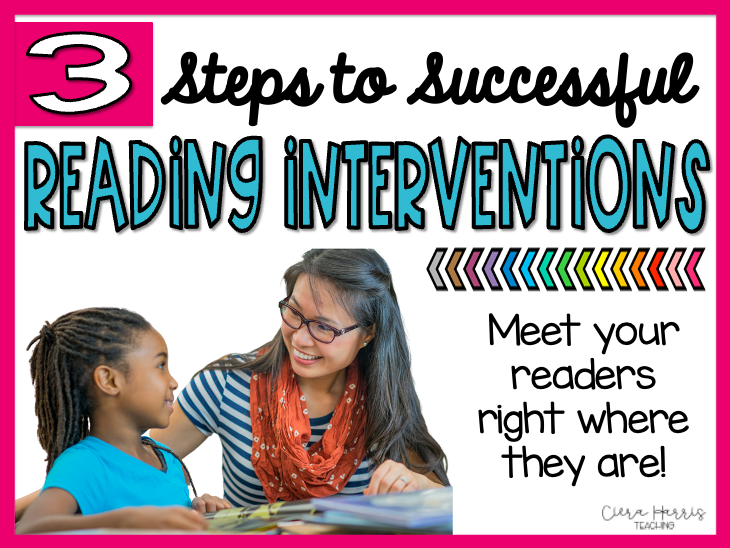Unfortunately, not every student we encounter is going to pick up on the skills they need to be a successful reader. It may take lesson after lesson of instruction and even then they still may need more. But how do you know what they need? How can you tell what angle to take on your lessons so you’re giving the student exactly what they need. Identifying reading comprehension interventions for students is a simple process that I’m happy to share about!

When I’m working with students in small groups, the questions that I ask about the text they are reading are very intentional questions. I don’t just ask questions ‘about the text’. Instead, I’m using data from past assessments or conversations to identify the types of questions that each student needs to practice. On a simple note taking page, I keep detailed notes of the questions that students answer incorrectly. When I see a pattern in the data, that’s when I know an intervention needs to take place.
For example, I might have a student who after 2-3 weeks of guided reading has continued to struggle answering vocabulary questions about words within the text. Each week and each time we meet, I make it a point to ask that student at least 1-2 questions on this topic to see if there is any improvement. After about 3 weeks, I noticed that the student is still struggling. It’s time to intervene and I know they need help on using context clues since it’s been vocabulary questions they continue to get wrong. But WHAT about context clues should I teach?
Step to Identifying Reading Comprehension Interventions:
- The first thing I do is think about the reading comprehension skill that the student is struggling on. Then I break the skill down into smaller steps and pieces that make up the skill. For example, I think ” What are all the parts and pieces that students need to know and understand in order to accomplish this skill?” I write each part and piece down into a bulleted list.
- Second, I have a short conference with the student. I might use a short piece of text and allow them to read the text on his/her own. Then I ask some preplanned questions that are specific to the reading skill at question. The questions I ask might not all be about the text. I might also ask questions like “What are context clues?” and “Why are using context clues important?” I want to make sure not only does the student know the steps and pieces, but also know the vocabulary and importance of the skill at question. With each answer, I record the students answers and make notes about what I’m noticing in the conversation and what the student is missing based on the bulleted list I created earlier.
- Next, from the students answers I identify what pieces are missing. What is the student not doing, not understanding about this skill. From my list, what are they not doing that is holding them up from being successful with this skill? What does the student need to change in order to be successful?
- Finally, based on the data that I’ve collected, I think through 3-6 activities that I or an aide could do with the student. I want to match the activities directly to the data so ensure that they will support where the deficiencies are located.

Want to snag these Reading Comprehension Intervention Breakdown recording pages? They are yours just by entering your email address below!
Tips for Identifying Reading Comprehension Interventions:
- Please remember that Tier One instruction comes FIRST. Tier one is grade level instruction. Interventions (like mentioned above) drop down into what’s called Tier Two instruction. You CAN NOT have meaningful Tier Two interventions if your Tier One instruction is lacking. If you’re noticing that many students are struggling with a skill, reflection needs to be done on the Tier One instruction. Teachers need to have a solid reading block where all students are receiving whole group Tier One instruction.
- Take time to evaluate the reading assessments that you give. (Not the standardized tests) I’m referring to the weekly skill/comprehension assessments that you’re giving. The data from the assessments is what is going to begin to show you if a student needs an intervention or not. Therefore the assessment itself needs to be solid. How do you know it’s solid? The reading assessment should support the exact learning that took place in the classroom. If you taught during the week about character traits then your assessment shouldn’t have questions on it about the theme of the text or the setting. If the assessment does have questions that doesn’t support the learning of the week, then think about grading only specific questions that do.
- Not all data is weighted equally. Conversations and face to face experiences between teacher and student give far much better data than paper pencil assessments. Do not base all of your interventions based off of paper pencil, but have a strong balance between the two.
- If a student has multiple skills that he/she is struggling with and may need an intervention for, then pick the one that supports comprehension the most. Different skills impact a student’s understanding of the text more than others. For example, if a student is struggling in both plot and theme, plot would be the better choice. If a student doesn’t understand the plot, understanding and identifying the theme won’t be able to happen.
One way to support your students throughout your Tier One instruction is to find misconceptions in student learning throughout your lessons in the week. One way that you can do this is to make sure to give exit tickets with every lesson. In these exit tickets, look for common misconceptions that your students are having. Address those misconceptions head on. Each day’s lesson should support what your students didn’t understand from the previous day’s lesson. Doing this daily can help avoid the need for an intervention later on.
I hope these tips are helpful when it comes to identifying reading comprehension interventions with and for your students. Make sure to hop back up and grab those intervention printables too!
Want to save this post for later? Make sure to pin the image below!






